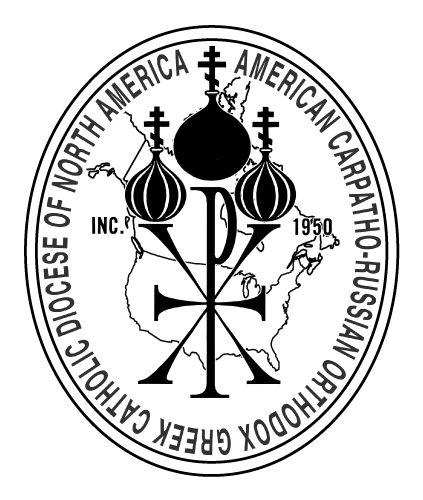Carpatho-Rusyn Prostopinije: The Influence of Znamennyj chant
Sources of the Prostopinije
The Carpatho-Rusyn Slavonic plainchant (prostopinije) is a typical and distinctive feature of Rusyn culture. Where did it come from?
No single answer can be given, because the prostopinije is a composite chant system, including elements from various sources.
The oldest of these is the znamennyj chant, and it is remarkable that this chant, which has almost disappeared in Great Russian church singing, is preserved in a few still-living traditions: the chant of the Russian Old Believers, the "Ukrainian Chant" of Galicia and other western Ukrainian provinces, and the Carpatho-Rusyn prostopinije.
The First Slavonic Chants
After the conversion of the rulers of Kievan Rus' to Christianity (late 10th century), the Greek "Byzantine" chant was adapted to Slavonic texts (we do not know to what extent this may have already been done among the Balkan Slavs).
The chant melodies were written with signs called neumes; these were applied to the Slavonic text.
Two Styles of Neumes, Two Styles of Chant
The Greeks had two styles of neumes at that time, and these produced two styles also among the Slavs of Kievan Rus'.
The "kondakarion" notation was applied to melodies used for kondaks (short hymnic stanzas that vary according to the day, sung at Matins and at the Liturgy) and to several other categories of hymns, mostly sung at Matins.
The "stolp" notation was applied to the melodies used for stichiry (hymns accompanying psalm verses, sung at Vespers and Matins), for irmosy and stepenny (based on canticles or psalms from the Bible and sung at Matins), and so on.
Manuscripts containing these two forms of chant have survived from the end of the 11th century.
The Spread of Znamennyj Chant
In the 13th century, the Tatars (Mongols) destroyed Kiev and most of the other important centers of Kievan Rus'.
The kondakarian chant vanished from use entirely, but the stolp notation and the znamennyj chant to which it was applied flourished, particularly in Belorussia and in Novgorod and the Russian northwest, and were further developed in the 15th century.
After the Muscovite takeover of Novgorod and Pskov (late 15th century), the North Russian (Novogorod region) chant tradition was adopted throughout the Grand Duchy of Moscow, developing separately from what we may call the "Ruthenian" chant tradition, that is, the chant employed in the Grand Duchy of Lithuania, the Kingdom of Poland, and the Kingdom of Hungary.
But the znamennyj chant remained basic to both, and remained essentially the same in both traditions despite some differences in interpretation.
Development of the Irmologia
The Ruthenian chant was collected in a single volume, the Irmologion, in which the znamennyj chant was the dominant element.
Carpatho-Rusyn cantors continued to write manuscript Irmologia until the second half of the 19th century; in western Ukraine, printed editions of the Irmologion began to appear in 1700.
The chant remained essentially the same; the biggest change was that beginning around 1600 the neumatic notation was abandoned for notation with a 5-line staff and square note heads.
Bokšaj's Cerkovnoje prostopinie (Church plainchant), first published in 1906, employs modern notation with round note heads; most of the irmosy, and a number of other chants, are still sung to the traditional znamennyj melodies in this collection, although Bokšaj does not refer to them by that name.
So the Carpatho-Rusyns have preserved the old znamennyj chant down to the present as the oldest element in their traditional prostopinije.
Next: Znamennyj chant: structure and character
By Steven Reynolds, University of Oregon.
From the "Carpatho-Rusyn American", Vol. II (1979), No. 3, published by the Carpatho-Rusyn Research Society.

